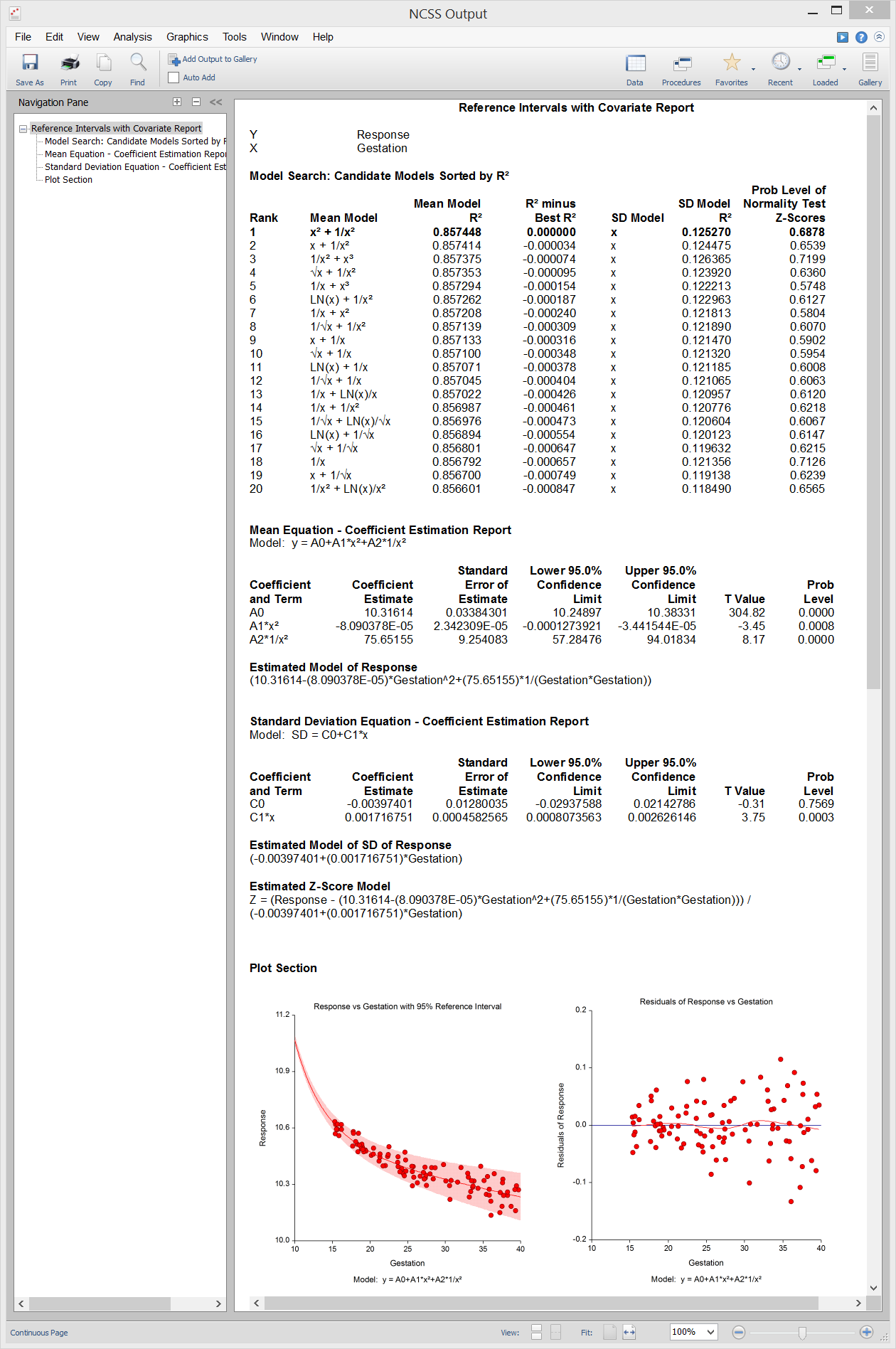Reference Intervals in NCSS
NCSS includes a number of tools for computing reference intervals, commonly used in diagnostic medicine. The reference interval procedures in NCSS are easy-to-use, validated for accuracy, and contain point-and-click methods not available in any other software for constructing reference intervals (e.g. ratio of polynomials fit). Use the links below to jump to the reference intervals topic you would like to examine. To see how these tools can benefit you, we recommend you download and install the free trial of NCSS. Jump to:Introduction
Reference Intervals are used in diagnostic medicine to determine if an individual is within normal population interval limits for some measurement. Often, reference intervals are constructed using percentiles and contain the middle 95% of measurements from a healthy or normal population. Age-specific reference intervals provide variable interval limits based on age.Technical Details
This page is designed to give a general overview of the capabilities of NCSS for reference intervals. If you would like to examine the formulas and technical details relating to a specific NCSS procedure, click on the corresponding '[Documentation PDF]' link under each heading to load the complete procedure documentation. There you will find formulas, references, discussions, and examples or tutorials describing the procedure in detail.Reference Intervals
[Documentation PDF]A reference interval is a type of prediction interval and contains the middle 95% of measurements of some substance or item from a healthy population. This procedure in NCSS calculates one-sided and two-sided reference intervals using the three different methods promoted by CLSI EP28-A3c:
- 1. Normal Distribution
- 2. Nonparametric Percentiles
- 3. Robust Percentile Estimators
Sample Data
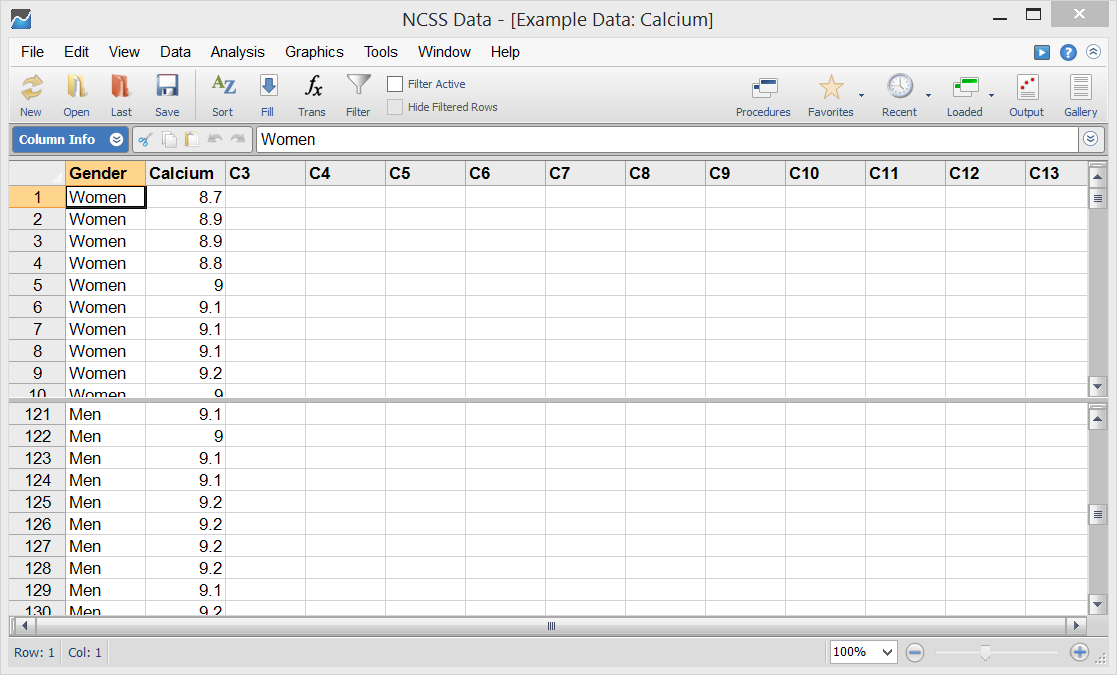
Procedure Input
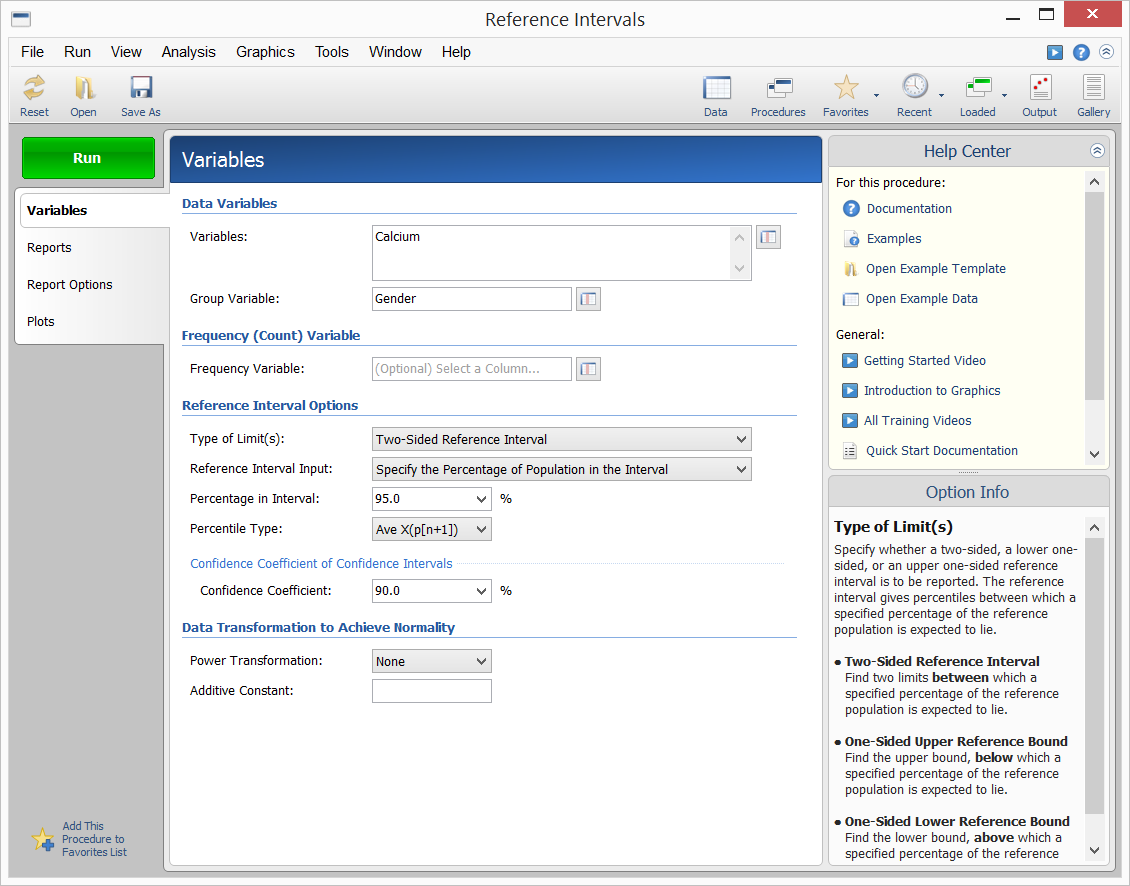
Sample Output
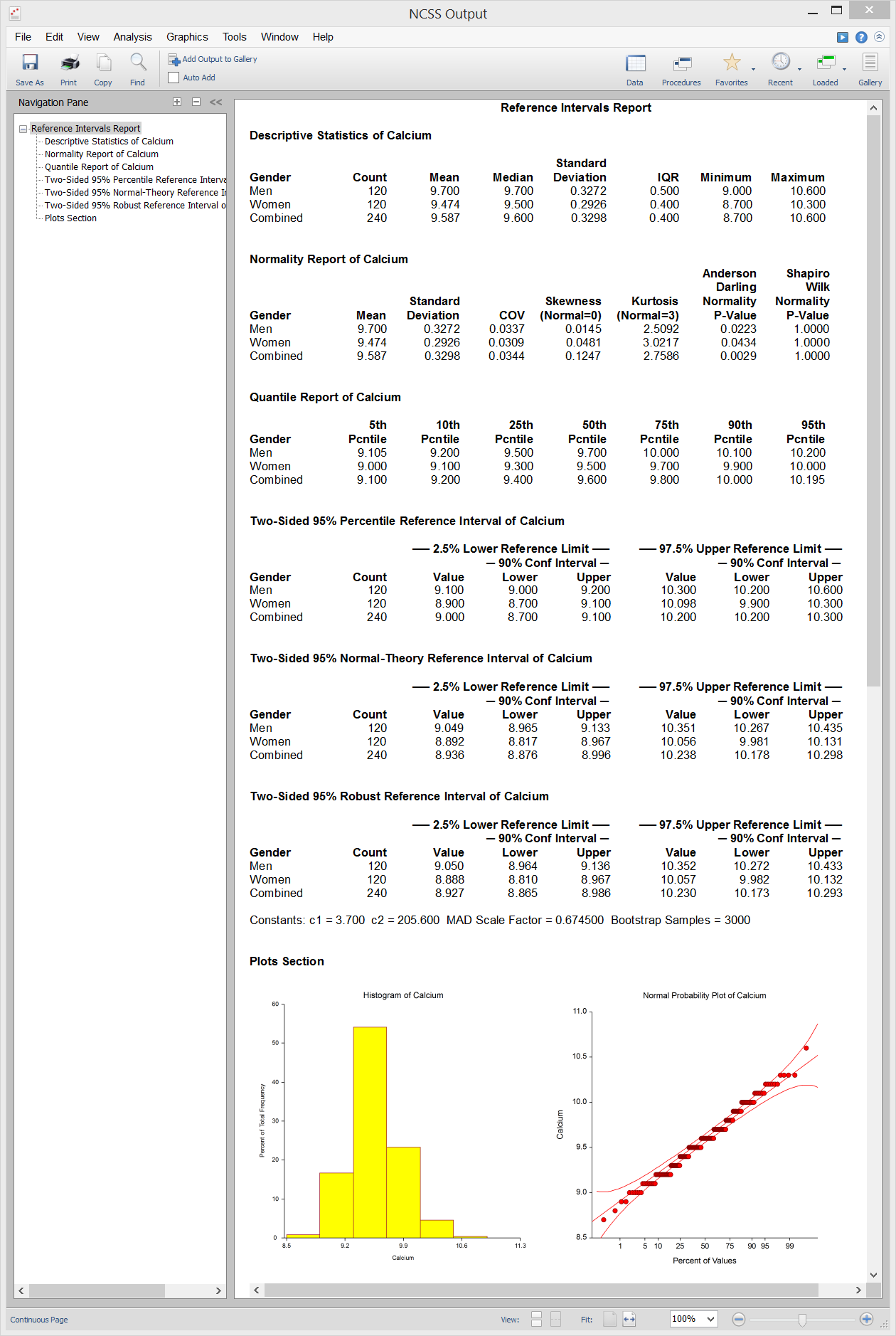
Reference Intervals - Age Specific
[Documentation PDF]An Age-Specific Reference Interval gives the boundaries between which a typical measurement on an individual of a certain age from a population of individuals is expected to fall. The reference interval is often presented as percentiles of a healthy reference population, such as the 2.5th percentile and the 97.5th percentile. The choice of the reference population is important and you would expect that there is often differences according to age, size, and so on. When a measurement on a particular individual at some continuous covariate X value (e.g. age) is outside of these reference interval boundaries, there is cause for concern. In an age-specific reference interval, the variable “age” is the covariate, but this methodology works for any continuous covariate. The plot below gives an example of a 95% reference interval for some diagnostic response based on the gestational age of a baby. As you can see, the width of the reference interval depends on the gestational age at which the measurement is taken. The response becomes much more variable as age increases.
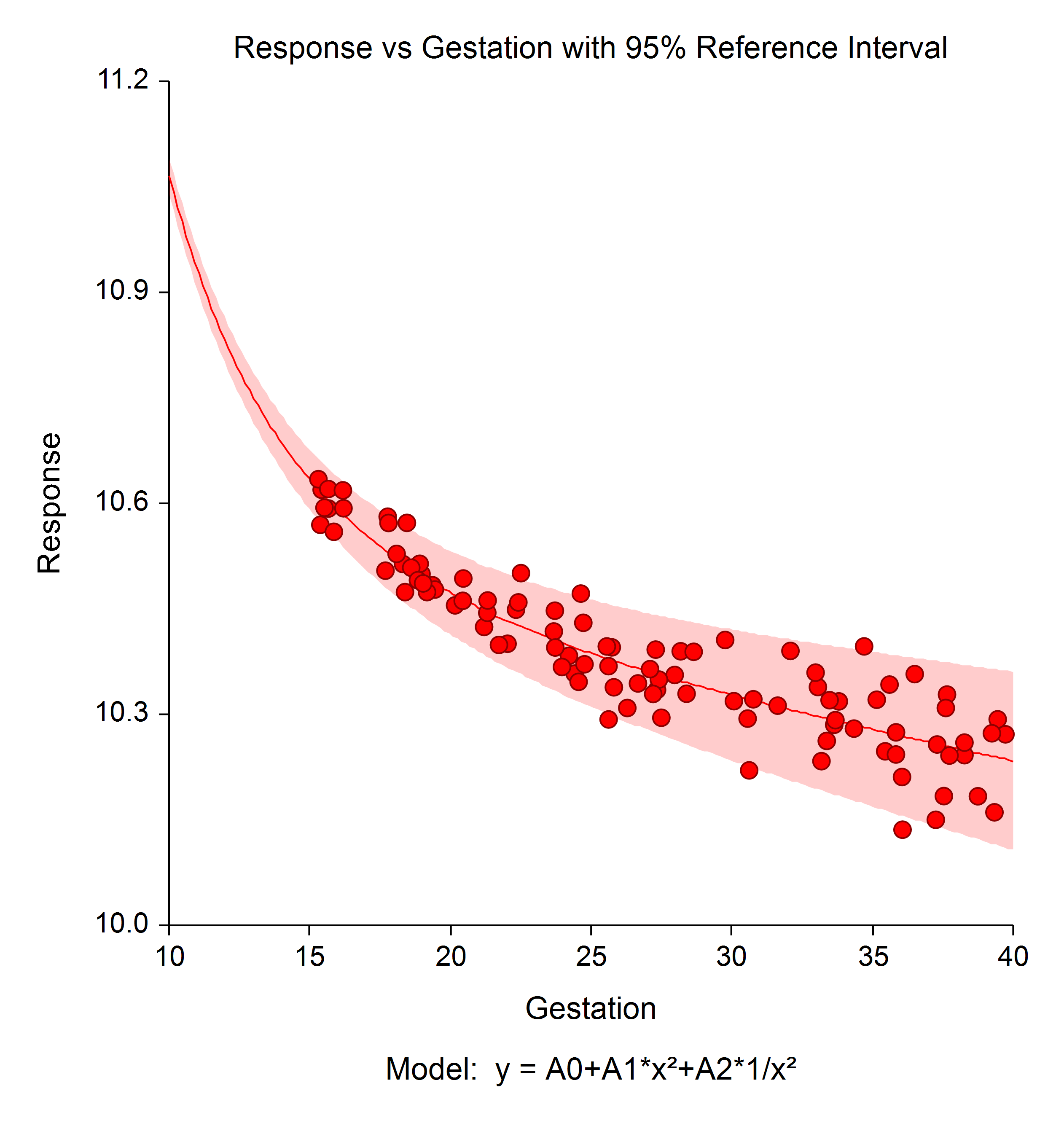 This procedure estimates age-specific reference intervals for cross-sectional studies using polynomials and fractional polynomials. These methodologies are outlined in Altman (1993), Royston and Wright (1998), and Royston and Sauerbrei (2008). The results from these methods are very similar to those obtained by quantile regression. NCSS additionally provides the ability to use ratios of polynomials to get an even better fit when suitable.
The resulting reference interval formulas may be used to produce (per)centiles as well as z-scores for analysis of new measurements that are not included in the original analysis.
This procedure estimates age-specific reference intervals for cross-sectional studies using polynomials and fractional polynomials. These methodologies are outlined in Altman (1993), Royston and Wright (1998), and Royston and Sauerbrei (2008). The results from these methods are very similar to those obtained by quantile regression. NCSS additionally provides the ability to use ratios of polynomials to get an even better fit when suitable.
The resulting reference interval formulas may be used to produce (per)centiles as well as z-scores for analysis of new measurements that are not included in the original analysis.
Sample Data
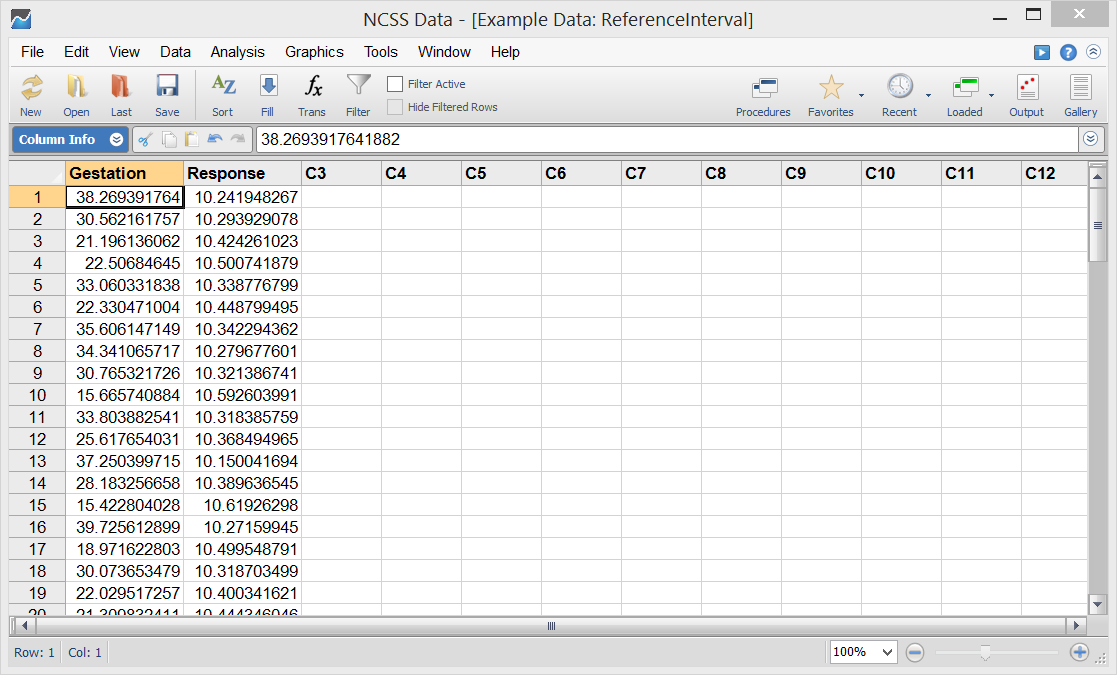
Procedure Input
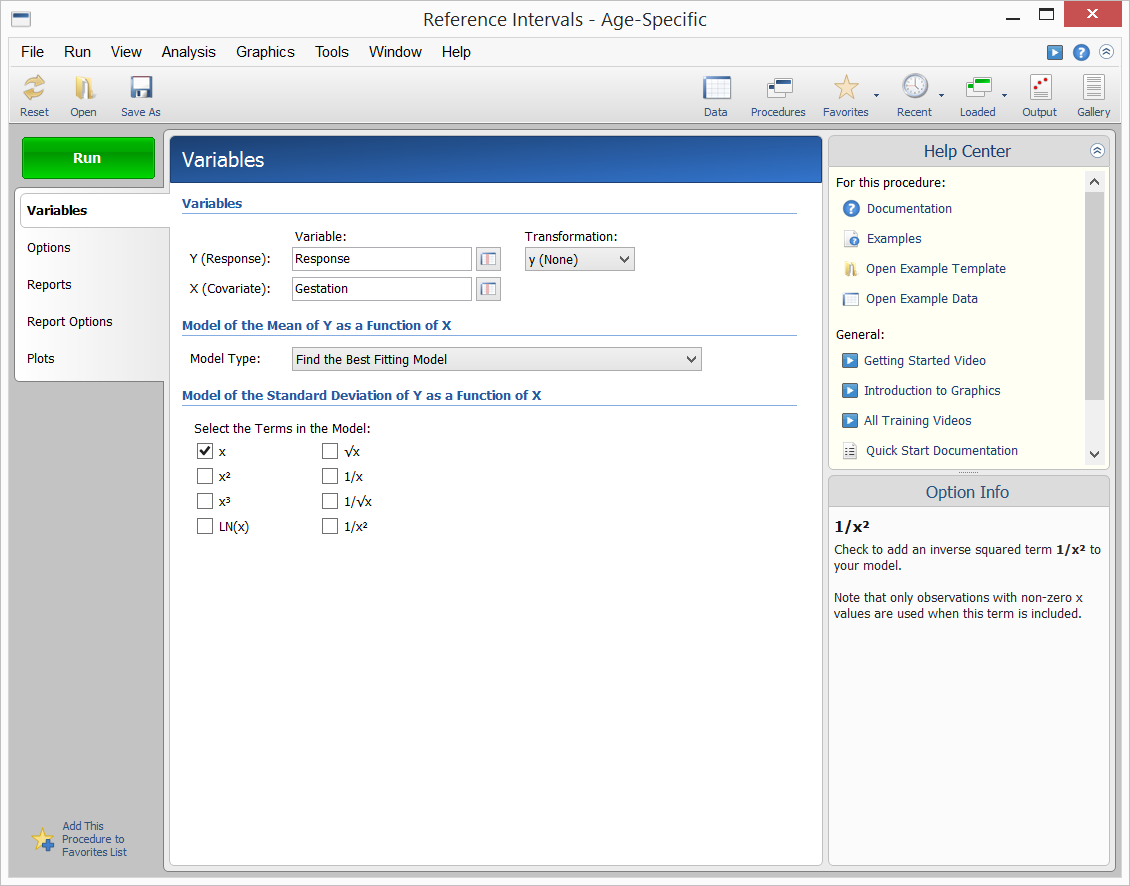
Sample Output
